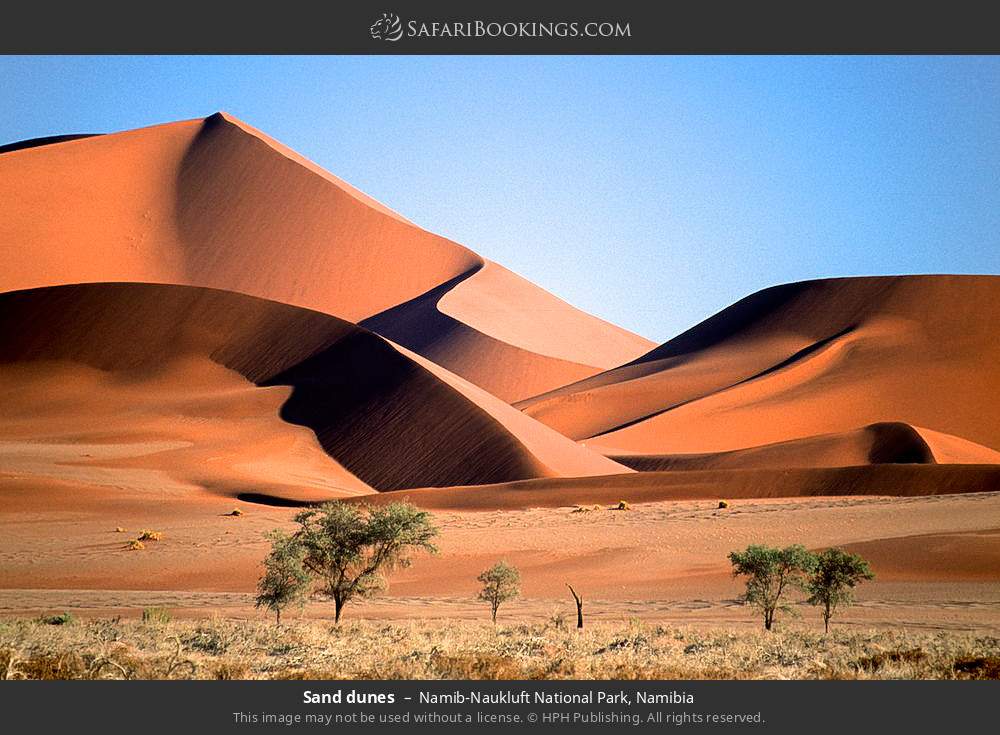Namibia: Unforgettable Adventure Beyond the Dunes

Overview of Namibia
Location and Geography
Namibia is located in southwestern Africa, bordering the Atlantic Ocean to the west. The country shares its borders with Angola and Zambia to the north, Botswana to the east, and South Africa to the south. Namibia's geography is characterized by vast deserts, including the Namib Desert along the coast and the Kalahari Desert in the east. The landscape is also dotted with mountains, the most famous being the Brandberg and the Fish River Canyon, which is one of the largest canyons in the world.
Key Points
| Feature | Description |
|---|---|
| Location | Southwestern Africa |
| Borders | Angola, Zambia, Botswana, South Africa |
| Landforms | Namib Desert, Kalahari Desert, Brandberg Mountain, Fish River Canyon |
Climate and Environment
Namibia experiences a dry climate with little rainfall throughout the year. The coastal areas have a cool and foggy climate due to the cold Benguela Current, while the interior regions have hot temperatures during the day and cooler nights.
The country is known for its diverse wildlife, including the famous Etosha National Park, home to various species such as elephants, rhinos, and lions. Environmental conservation is a key focus in Namibia, with efforts to protect its unique ecosystems and wildlife.

Namibia's Rich History
Colonial Legacy
Ethnic Groups and Languages Namibia boasts a rich tapestry of ethnic diversity, with groups such as the Ovambo, Khoikhoi, Herero, and Damara people contributing to its cultural landscape. Each group brings forth its unique traditions and languages, reflecting the country's vibrant heritage.
Despite the colonial imposition of English for official purposes, these ethnic groups have tenaciously held onto their linguistic and cultural identities, evident in their attire and way of life.
Traditional Music and Dance
Traditional music and dance are integral to Namibian culture, embodying joy, storytelling, and social cohesion. The rhythmic harmonies of drums and marimbas, coupled with soulful vocals, characterize Namibian music, passed down through generations.
Dance forms, ranging from energetic displays of agility to ceremonial enactments of cultural beliefs, speak volumes about the country's historical narratives and values. Namibians cherish their roots and reinforce their cultural legacy through these art forms.
Independence and Modern-day Politics
Ethnic Groups and Languages Post-independence, Namibia's ethnic groups continue to shape the nation’s fabric, embracing and celebrating their distinct traditions. The legacy of the Ovambo, Khoikhoi, Herero, and Damara people endures in their cultural practices, illustrating resilience in the face of historical challenges.
While English remains prevalent in administrative spheres, the languages and customs of these groups persist, showcasing a collective commitment to preserving their cultural identity amidst evolving societal landscapes.

Popular Tourist Destinations
Sossusvlei and Namib-Naukluft National Park
Iconic Landscapes When you explore Namibia, a visit to Sossusvlei and the Namib-Naukluft National Park is a must. The towering red dunes of Sossusvlei create a surreal backdrop against the clear blue skies, offering a photographer's dream.
As you trek through these vast desert landscapes, marvel at the unique flora and fauna that have adapted to survive in this harsh environment. The iconic Deadvlei, with its ancient dead trees standing stark against the white clay pan, is a sight that will linger in your memory long after you leave.
Adventure and Serenity
Venture into the heart of the Namib Desert and experience the tranquillity of the stark wilderness at Namib-Naukluft National Park. From hiking trails that lead to panoramic viewpoints to adrenaline-pumping activities like quad biking and sandboarding, there is something for every adventurer.
Be prepared to be awestruck by the rugged beauty of this ancient land, where silence reigns supreme and the starlit skies offer a mesmerizing spectacle.
Etosha National Park and Wildlife
Safari Paradise Embark on a wildlife safari like no other at Etosha National Park, home to an incredible species diversity. As you drive through the vast expanse of the park, be prepared to encounter majestic elephants, graceful giraffes, and elusive big cats against the backdrop of shimmering salt pans. The waterholes throughout the park serve as gathering points for wildlife, providing endless opportunities for captivating wildlife encounters.
Whether you opt for a self-drive safari or a guided tour, Etosha promises an unforgettable wildlife experience that will leave you in awe of Namibia's natural wonders.

Namibian Cuisine and Delicacies
Traditional Dishes
When experiencing Namibian cuisine, be prepared to tantalize your taste buds with a blend of flavours influenced by the country's diverse cultural heritage. Omaere stands out as a traditional dish made from marinated wild game meat, reflecting the hunting traditions of the indigenous communities. Kapana, a popular street food, offers a sensory explosion with its grilled beef strips served with salsa and spices, showcasing the fusion of African and European culinary influences.
Influences from Indigenous Communities
Namibian cuisine draws inspiration from the culinary practices of various indigenous groups, each contributing unique ingredients and cooking techniques. Mahangu porridge, a staple in many households, is a hearty porridge made from pearl millet flour and enjoyed with various accompaniments like meat stews or vegetables. Potjiekos, a slow-cooked stew prepared in a cast-iron pot over an open flame, showcases the art of communal cooking and the emphasis on fresh ingredients sourced from the land.
Explore the rich tapestry of flavors that make up Namibian cuisine. Traditional dishes reflect a harmonious blend of indigenous culinary traditions and colonial influences.
From smoky grilled meats to hearty stews and flavorful maize-based dishes, each bite tells a story of the country's history and cultural diversity. Embrace the warmth of Namibian hospitality as you savour the flavours of this vibrant culinary landscape.

Adventure Activities in Namibia
Sandboarding in the Namib Desert
When immersing yourself in Namibia's vast landscapes, one thrilling adventure you cannot miss is sandboarding in the famous Namib Desert. Feel the rush as you glide down towering sand dunes, experiencing the exhilarating blend of adrenaline and awe at the breathtaking desert scenery.
Whether you're a seasoned thrill-seeker or a first-time adventurer, sandboarding offers a unique way to interact with the stunning natural environment of Namibia.
Wildlife Safaris and Conservation Efforts
As you delve into Namibia's wilderness, embrace the opportunity to partake in wildlife safaris that not only offer sightings of majestic animals like elephants, lions, and rhinos but also contribute to conservation efforts aimed at preserving the country's rich biodiversity.
Engage with knowledgeable guides who share insights into Namibia's ecosystems and the conservation challenges they face. By participating in these safaris, you actively support the protection of Namibia's wildlife for future generations to admire and cherish.
Namibia's Natural Wonders
Fish River Canyon
Venturing to Namibia's famous Fish River Canyon unveils a geological marvel that astounds visitors with its sheer size and beauty. Carved over millions of years, the canyon offers a humbling perspective on the forces of nature and the intricate processes that shape the Earth's surface.
As you stand on the canyon's edge, gazing out at the vast expanse below, you can't help but feel a sense of insignificance amidst the grandeur of this natural wonder. Exploring the canyon on foot allows you to fully appreciate its magnitude and immerse yourself in its tranquil desert landscape.
Spitzkoppe and the Brandberg Mountain
Embarking on a journey to Spitzkoppe and the Brandberg Mountain introduces you to Namibia's ancient rocky formations that have stood the test of time. Marvel at the rugged beauty of Spitzkoppe's granite peaks, which serve as a playground for climbers seeking an adrenaline-filled challenge and photographers capturing the striking contrasts of light and shadow.
The iconic Brandberg Mountain, with its rich cultural significance and unique rock art sites, offers a spiritual journey through time as you explore its slopes and caves. Witnessing the fiery hues of sunset casting a golden glow on these majestic landmarks leaves a lasting impression of Namibia's raw, unbridled beauty.

Sustainable Tourism in Namibia
Community-Based Tourism Initiatives
When you explore Namibia's natural wonders, you also support community-based tourism initiatives that empower local populations and preserve cultural heritage. By staying at lodges and camps run by indigenous communities, you directly contribute to sustainable development and create opportunities for economic growth.
Engaging in guided tours led by knowledgeable guides from nearby villages enhances your travel experience and fosters meaningful connections with the people who call these extraordinary landscapes home. Through your interactions with local artisans, storytellers, and conservationists, you gain insight into traditional practices and the importance of safeguarding Namibia's rich heritage for future generations.
Conservation Practices and Responsible Travel
In Namibia, prioritizing conservation practices and responsible travel ensures the preservation of fragile ecosystems and wildlife habitats. You play a vital role in safeguarding the natural environment by adhering to eco-friendly principles such as minimizing waste, conserving water, and supporting wildlife conservation efforts.
Opting for ethical wildlife viewing experiences, such as observing desert-adapted elephants or tracking rhinos with expert guides, promotes ecotourism that prioritizes animal welfare and environmental sustainability. Embracing a leave-no-trace mindset and participating in local conservation projects allow you to actively contribute to the protection of Namibia's unparalleled biodiversity and contribute to the ethos of responsible travel.
